Jesse Ruan
Classification of head impacts based on the spectral density of measurable kinematics
Apr 19, 2021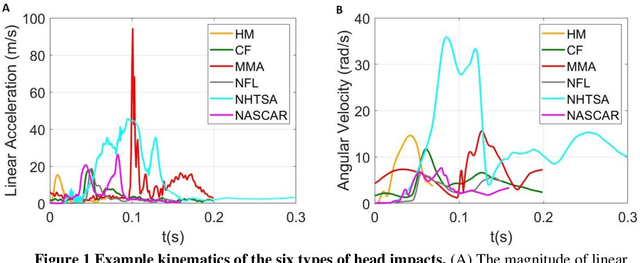
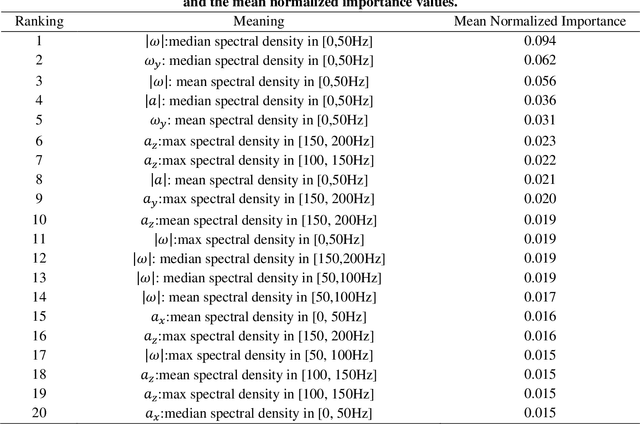
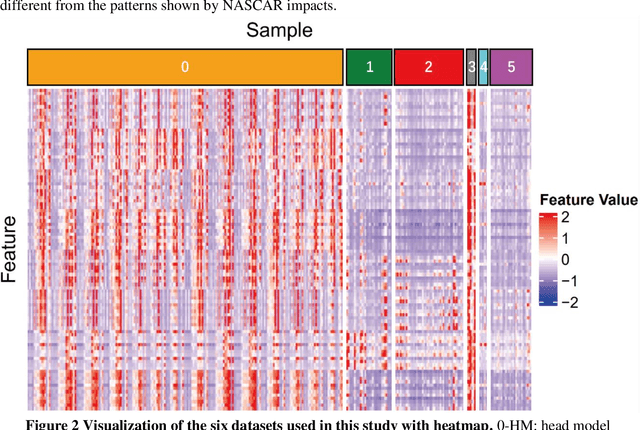
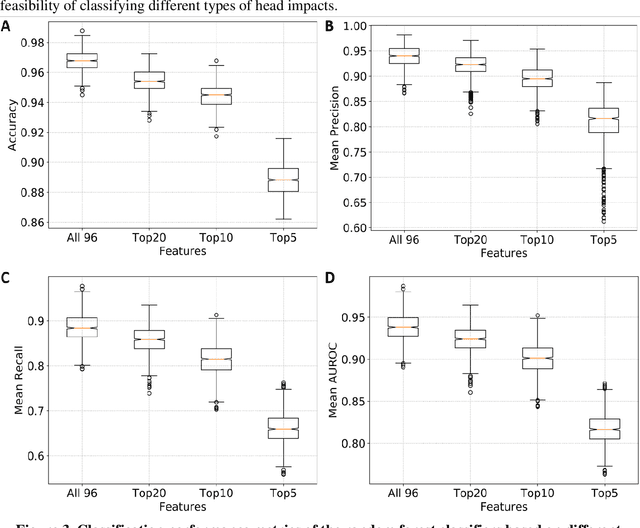
Abstract:Traumatic brain injury can be caused by head impacts, but many brain injury risk estimation models are less accurate across the variety of impacts that patients may undergo. In this study, we investigated the spectral characteristics of different head impact types with kinematics classification. Data was analyzed from 3262 head impacts from head model simulations, on-field data from American football and mixed martial arts (MMA) using our instrumented mouthguard, and publicly available car crash data. A random forest classifier with spectral densities of linear acceleration and angular velocity was built to classify different types of head impacts (e.g., football, MMA), reaching a median accuracy of 96% over 1000 random partitions of training and test sets. Furthermore, to test the classifier on data from different measurement devices, another 271 lab-reconstructed impacts were obtained from 5 other instrumented mouthguards with the classifier reaching over 96% accuracy from these devices. The most important features in classification included both low-frequency and high-frequency features, both linear acceleration features and angular velocity features. It was found that different head impact types had different distributions of spectral densities in low-frequency and high-frequency ranges (e.g., the spectral densities of MMA impacts were higher in high-frequency range than in the low-frequency range). Finally, with head impact classification, type-specific, nearest-neighbor regression models were built for 95th percentile maximum principal strain, 95th percentile maximum principal strain in corpus callosum, and cumulative strain damage (15th percentile). This showed a generally higher R^2-value than baseline models without classification.
Predictive Factors of Kinematics in Traumatic Brain Injury from Head Impacts Based on Statistical Interpretation
Feb 13, 2021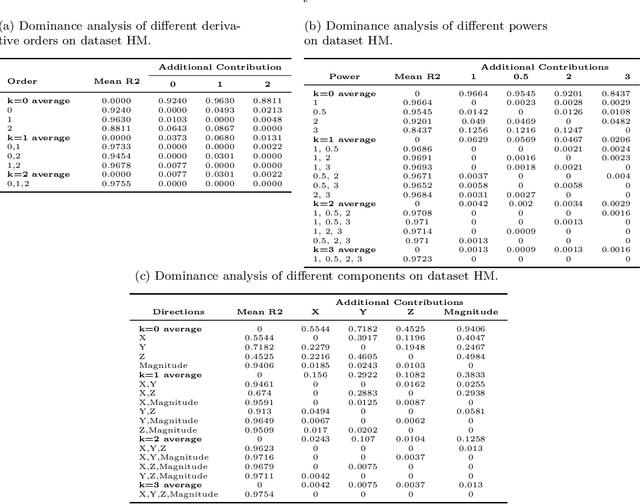
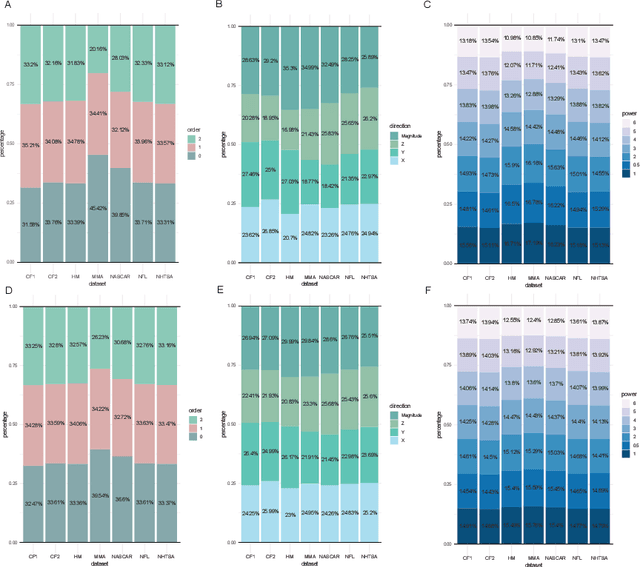
Abstract:Brain tissue deformation resulting from head impacts is primarily caused by rotation and can lead to traumatic brain injury. To quantify brain injury risk based on measurements of accelerational forces to the head, various brain injury criteria based on different factors of these kinematics have been developed. To better design brain injury criteria, the predictive power of rotational kinematics factors, which are different in 1) the derivative order, 2) the direction and 3) the power of the angular velocity, were analyzed based on different datasets including laboratory impacts, American football, mixed martial arts (MMA), NHTSA automobile crashworthiness tests and NASCAR crash events. Ordinary least squares regressions were built from kinematics factors to the 95% maximum principal strain (MPS95), and we compared zero-order correlation coefficients, structure coefficients, commonality analysis, and dominance analysis. The angular acceleration, the magnitude and the first power factors showed the highest predictive power for the laboratory impacts, American football impacts, with few exceptions (angular velocity for MMA and NASCAR impacts). The predictive power of kinematics in three directions (x: posterior-to-anterior, y: left-to-right, z: superior-to-inferior) of kinematics varied with different sports and types of head impacts.
Prediction of brain strain across head impact subtypes using 18 brain injury criteria
Dec 18, 2020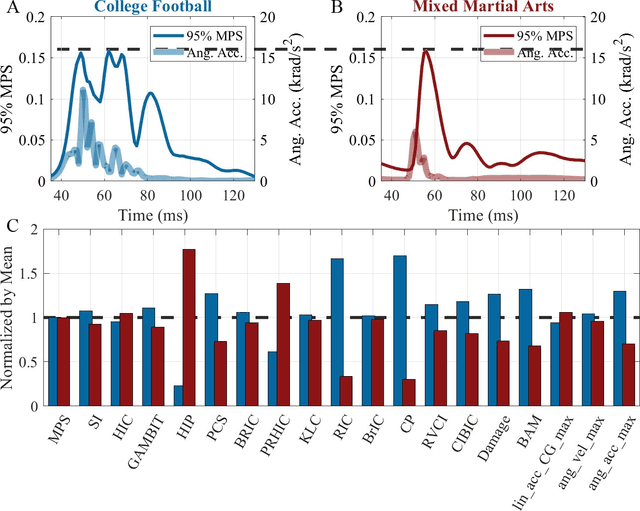
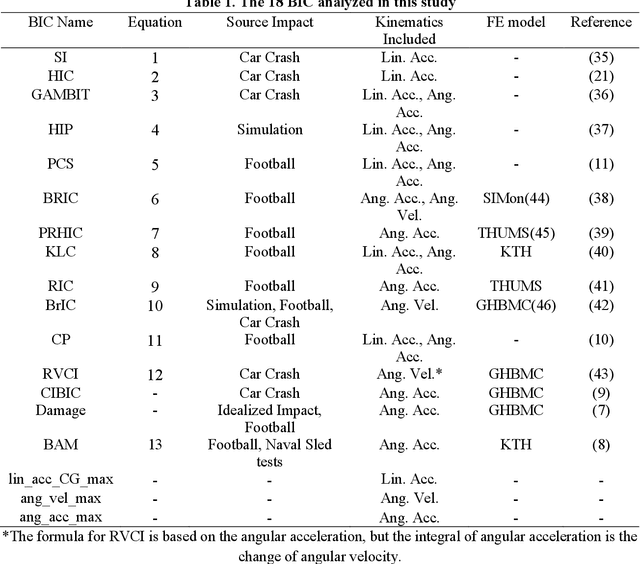
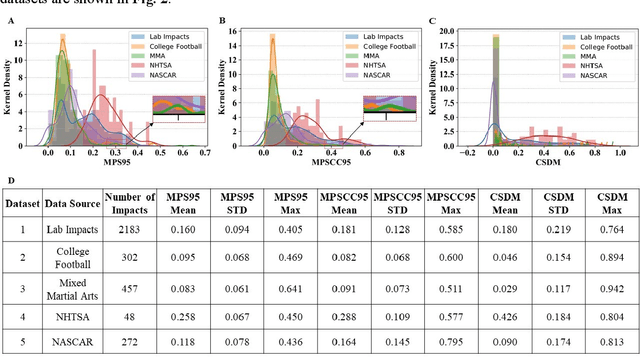

Abstract:Multiple brain injury criteria (BIC) are developed to quickly quantify brain injury risks after head impacts. These BIC originated from different types of head impacts (e.g., sports and car crashes) are widely used in risk evaluation. However, the predictability of the BIC on different types of head impacts has not been evaluated. Physiologically, the brain strain is often considered the key parameter of brain injury. To evaluate the BIC's ability to predict brain strain across five datasets comprising different head impact subtypes, linear regression was used to model 95% maximum principal strain, 95% maximum principal strain at corpus callosum, and cumulative strain damage (15%) on 18 BIC. The results show significant differences in the relationship between BIC and brain strain across datasets, indicating the same BIC value may indicate different brain strain in different head impact subtypes. The accuracy of regression is generally decreasing if the BIC regression models are fit on a dataset with a different head impact subtype rather than on the dataset with the same subtype. Given this finding, this study raises concerns for applying BIC to predict the brain strain for head impacts different from the head impacts on which the BIC was developed.
 Add to Chrome
Add to Chrome Add to Firefox
Add to Firefox Add to Edge
Add to Edge